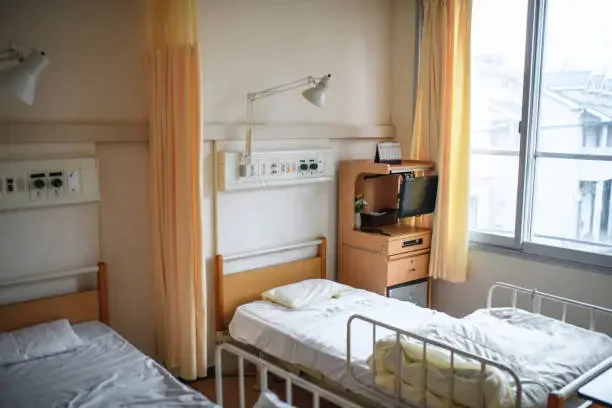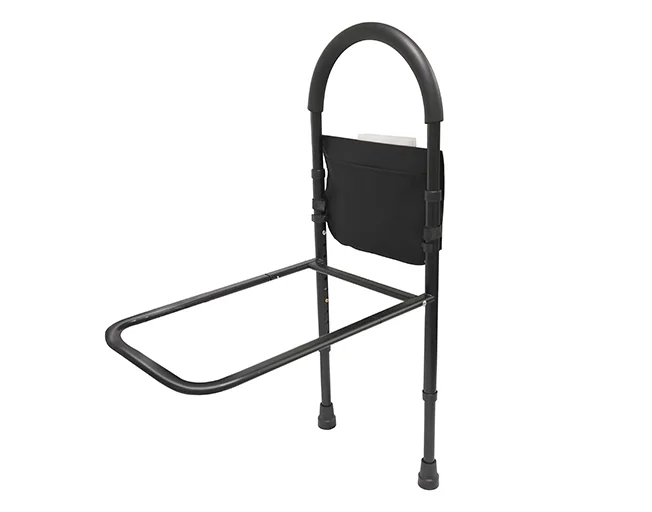Bedside Assist Devices: Key Considerations in Elderly Bed Safety Rail Design
Time : Aug 28, 2025 View : 1,482

When mobility starts slipping with age or while recovering, making the bedside a safe zone is super important. Caregivers, healthcare pros, or older folks looking to keep their independence—bed safety rails can be a total lifesaver. These aren’t just some random metal bars. They’re smartly built tools, mixing comfy ergonomics with tough materials and designs that put the user first. They help stop falls and make daily life a bit cozier. This guide dives into how bed safety rails work, their structure, and the rules around them, while pointing out cool features and product picks for different needs.
Functional Requirements of Bedside Assist Devices
For any bedside assist device to be effective in elderly care or post-operative recovery, it must meet key functional criteria. These ensure not only user safety but also ease of use across various settings.
- Support for Mobility and Transfers: One primary function is aiding users in getting in and out of bed safely. A well-designed rail provides leverage for repositioning or standing up without requiring external help. This promotes autonomy and reduces caregiver strain.
- Prevention of Falls During Sleep: Lots of older folks get confused at night or toss and turn without meaning to. Bed rails work like sturdy guards, keeping accidental tumbles at bay while still letting you move around a bit. They’re a solid middle ground—safe but not caging you in.
- Compatibility with Various Bed Types: Since beds vary in height, frame style, and mattress thickness, compatibility is crucial. Devices should accommodate standard home beds as well as adjustable hospital beds without compromising stability.
Ergonomic and Human-Centered Design Principles
For a bedside assist device to really work well in elderly care or after surgery, it’s gotta hit some core marks. These make sure the user stays safe and can actually use the thing easily, no matter where they are.
- Optimal Height and Grip Positioning: Proper grip height allows users to apply force efficiently when shifting positions. Adjustable heights cater to different body sizes and preferences, enabling safer transfers.
- Minimizing Physical Strain for Users and Caregivers: When a device aligns with natural movement patterns—such as rising from a seated position—it reduces the physical effort needed by both parties. Features like foam grips further enhance comfort during use.
- Accommodating Different Body Sizes and Conditions: From petite seniors to individuals recovering from surgery with limited mobility, assistive devices must support diverse anthropometric ranges. Customizable configurations can address these variations effectively.
Structural Integrity and Material Selection
When you’re dealing with something that’s gotta hold up human weight every single day, durability isn’t something you mess around with. The materials you pick make a big difference in how long the device lasts, how safe it is, and keeping things clean. Bed rails need to meet industry standards, usually supporting anywhere from 250 to 400 pounds, so they don’t buckle under pressure. If the materials aren’t treated right, sweat or cleaning can cause rust really quickly. Going with stuff like powder-coated carbon steel or other non-toxic options keeps the rail sturdy and safe for the long haul without any health worries.
Product Features: Carbon steel / whole frame spraying / removable / no drilling / with storage bag / foam handle.
Wear resistance is vital since these products undergo repeated stress cycles daily. Components like foam handles should maintain their integrity over time without degrading or becoming slippery.
Safety Compliance and Regulatory Considerations
Safety isn’t only about how a bed rail is built—it’s also about sticking to tough rules that keep users out of harm’s way. Medical-grade gear has to match up with global standards like ISO 13485 or FDA Class I, where they apply. These certifications come from hardcore testing to prove the device is safe. You gotta keep gaps between bars small to stop arms or legs from getting stuck, especially for folks with memory issues who might move all wild at night. Strong locking systems are a must to keep the rail from popping off or collapsing when someone’s using it. Stability feet or anti-slip pads further anchor the device firmly against the bed frame or floor surface.
Integration with Hospital and Home Care Environments
Bedside assist devices need to work smoothly whether in a high-tech hospital or someone’s cozy home. For home use, they’re built to be super easy—no tools needed, just pop ‘em together. They come in compact boxes and look subtle enough to blend into your bedroom without screaming “medical gear.” The product is detachable, no drilling required, and a breeze to set up. In places like hospitals or care homes with fancy motorized or adjustable beds, it’s gotta play nice with those setups. Compatibility is a big deal there. Devices must not interfere with mechanical adjustments while remaining securely fixed during operation.

Lightweight construction aids portability while snap-in assembly mechanisms reduce setup time—ideal when transitioning patients between rooms or settings frequently.
Net weight / Gross weight: N.W.:1.5kg; G.W.: 2kg.
Advanced Features in Modern Bedside Assist Devices
Modern innovations have expanded what these devices can do—turning them into multi-functional tools rather than mere barriers.
- Foldable or Retractable Rails for Accessibility: Foldable designs allow caregivers easier access during bathing or repositioning tasks without needing full removal of the rail system—enhancing workflow efficiency in caregiving routines.
- Integrated Lighting or Alert Systems: Some models now feature motion-activated LED lighting that helps users navigate dark rooms safely at night—minimizing tripping hazards during bathroom visits while avoiding disruptive overhead lights.
- Smart Monitoring Capabilities: Advanced systems integrate sensors that alert caregivers when a user attempts to leave bed unassisted—especially useful in dementia wards where fall risk is high due to wandering behavior at night.
XUNYU’s Approach to Bed Safety Rail Innovation
For those seeking reliable solutions backed by thoughtful engineering, XUNYU stands out as a trusted provider in elderly care equipment. XUNYU’s wide range of products blends practical use with designs that are easy to handle, whether for home care or hospital settings. Based in Foshan City, they tap into serious manufacturing know-how to craft top-notch gear. Need custom ODM or OEM solutions? They’ve got you covered, whether you’re equipping a whole clinic or just sprucing up your home care setup. Their stuff puts safety first but doesn’t skimp on being user-friendly. That combo’s helped them build a solid rep in markets all over the world.
Maintenance, Inspection, and User Training Guidelines
To prolong device lifespan—and maintain its protective function—you’ll need consistent upkeep paired with proper training practices. Inspect fasteners regularly; look out for rust spots, especially around joints; test locking mechanisms weekly under moderate load conditions. Use mild disinfectants compatible with powder-coated metals; avoid abrasive scrubs, which could degrade painted surfaces over time. Ensure all staff understand how installation works—including correct positioning relative to mattress edges—and practice emergency removal scenarios if needed.
FAQ
Q: Can I install the XY-310 rail without professional help?
A: Yes—the XY-310 is detachable, requires no drilling, and is easy to install.
Q: Is this suitable for hospital-grade adjustable beds?
A: Yes—as long as side clearance allows mounting space; always check compatibility before purchase based on your specific bed model dimensions.
Q: How often should I inspect my bedside assist rail?
A: We recommend weekly checks on all mechanical parts including joints, grips, fasteners, and monthly cleaning using non-corrosive agents suited for coated steel surfaces.


